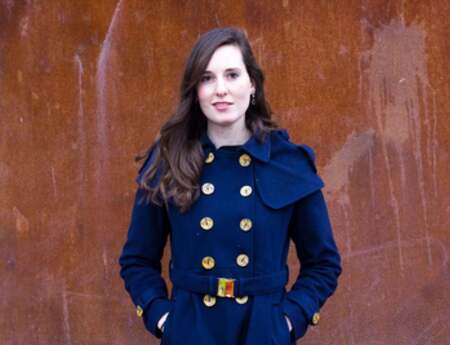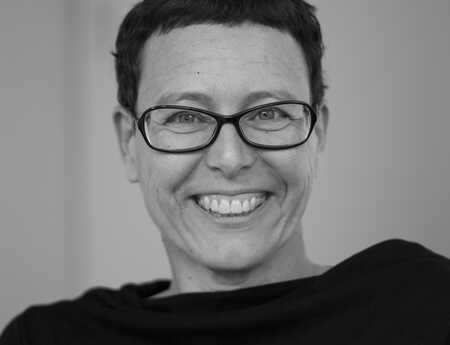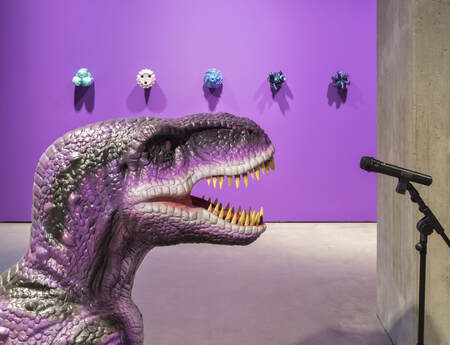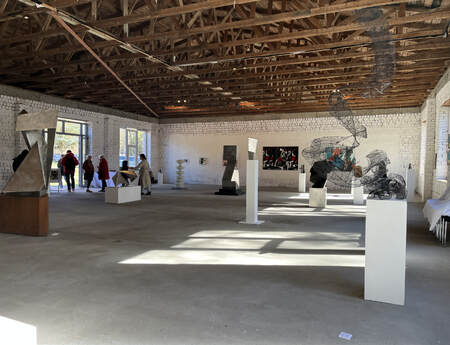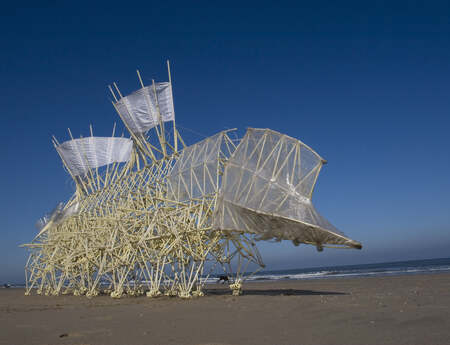More Heat Than Light
There is more going on in the exhibition ‘More Heat Than Light’ than meets the eye. The works of Argentine artist Agustina Woodgate, who is based in the Netherlands, look simple but are often complex experiments tying together quantum communications and the internet, time, temperature, and energy.
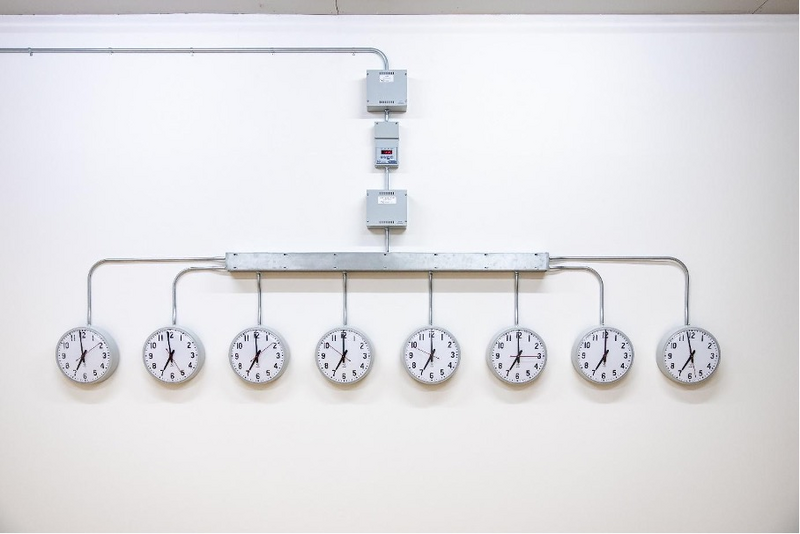
One example is the 8 analogue clocks on the wall of the art space Stroom, The Hague, that receive signals from a digital master clock, which is connected to the city’s energy supply. The analogue clocks in the work Powerline run almost synchronously. One is only seconds behind the other. The arms of the clock have sandpaper on them, so while time marches on, the numbers of the clock are slowly being erased, metaphorically graining time into small bits.
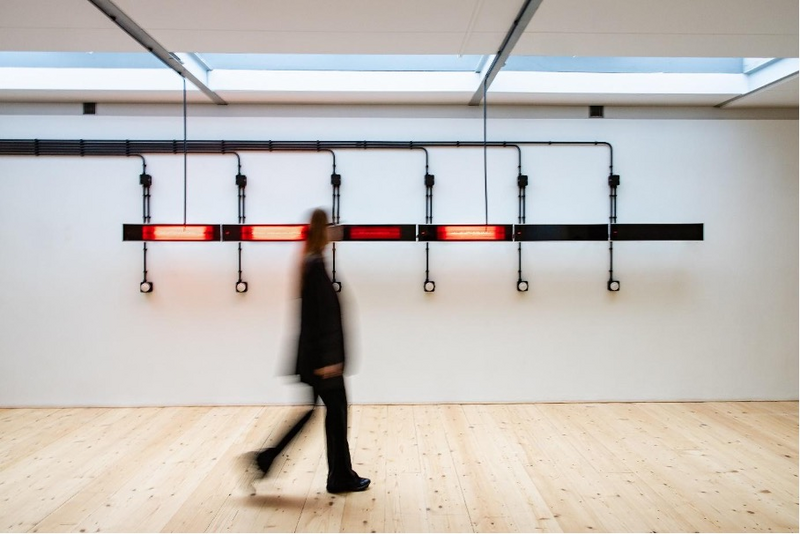
In another space, six infrared radiators are connected to sensors that light up every time there is movement in the space. The work Radiations uncovers short poetical sentences connected to quantum communications and the internet, for example, ’Uncertain Fidelity’ or ‘Decoherent Supremacy’. These phrases seem contradictory, but they start making sense the more you read about quantum communications. While reading the texts, the heat of the art space slowly rises, so the number of people and their movements determine the temperature of the space.
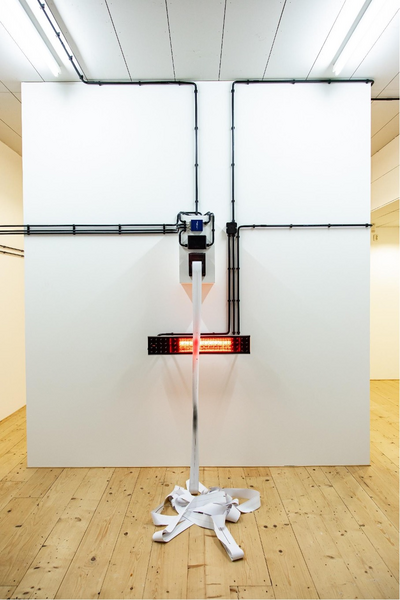
Around the corner, a thermal printer archives the results of the temperatures of two thermometers outside and inside. The sound of the pixel that is printed every three seconds is amplified, giving a great thump that resonates through the whole art space. The work Future Star feels like the heartbeat of the space and evokes an anxious feeling as if something might fall apart at any moment. And this is true in a certain way, because underneath the printer there is another radiator that also lights up when you pass by. It heats up the printed paper and makes it turn dark, destroying the records of the thermometers.
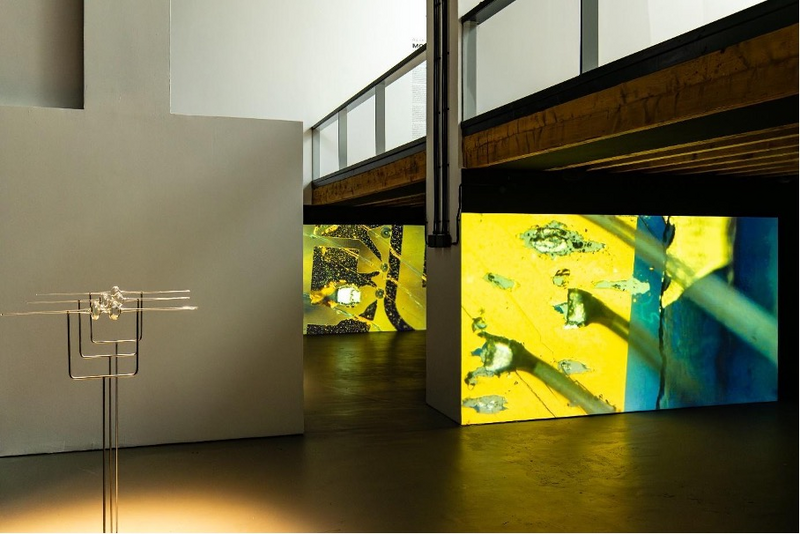
Downstairs there is a work that hit upon the key in quantum communications: imperfect synthetic diamonds that are so small they are almost invisible to the naked eye. The video-installation Alice & Bob is named after two of these diamonds; one is in the QuTech laboratory in Delft and the other in the KPN Tower in The Hague. The images shown in the installation are clips from the laboratory that are edited in real-time by a computer and correspond to the temperatures of the two previously mentioned thermometers. When the temperature drops below 10°C, the images will synchronise, attempting to make the entanglement visible between the two diamonds.
Finally, there is a series of hand-blown glass works suspended from steel frames. Within them are small diamond-like stones that encapsulate the costs of growing synthetic imperfect diamonds for quantum communications and the internet. What the work directly makes visible is the astonishing difference between the necessary materials and circumstances in which the diamonds are made and kept and the labour, which is valued at a much lower cost.
Honestly, the connectivity between the different artworks is a lot to wrap your head around. Every time you think you thoroughly understand a work, it seems that you lose your grasp on the matter again. However, it is important to remember that this is not an exhibition attempting to explain quantum communications and the internet, even though there is a context room with lots of books and even one of those minuscule diamonds that you can see with a magnifying glass. It rather shows the complexity of the entanglement that quantum communications lays bare.
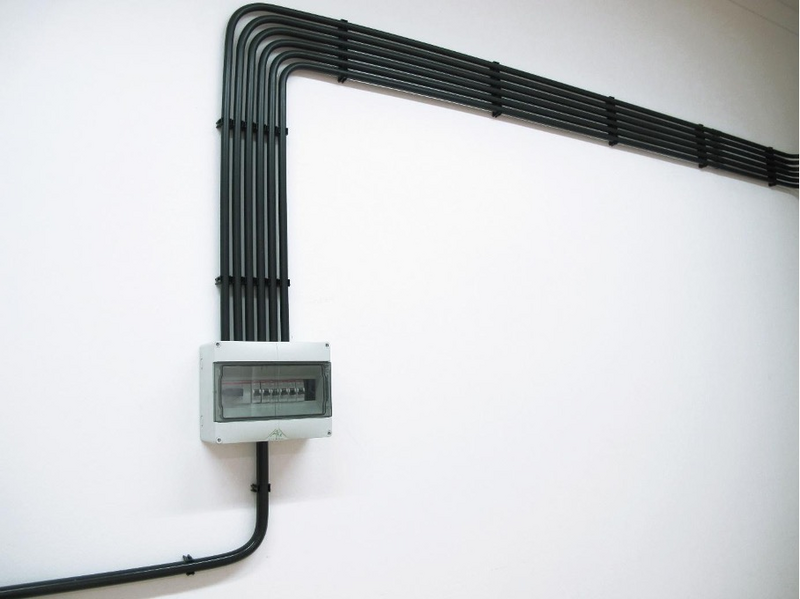
When you enter the exhibition space, the observant spectator might notice that all the cables on the wall have not been hidden but visibly run from the walls to the ceiling out of the exhibition space straight towards the library of Stroom, where the meter cupboard is. It is even the first work described in the booklet of the exhibition. It doesn’t only provide the artwork with the power to function but also connects the different aspects they touch on, such as quantum communications, rising temperatures, and time that is slipping away.
Woodgate is so intrinsically connected to her artwork that it shows people how one slight change can have an unexpected effect somewhere else. In this sense, her exhibition is a big experiment where it isn’t clear what the outcomes might be or what results some artworks might bring to light. But it does reveal a very fragile system. It reminds us of climate scientists, who can’t predict what the changes in rising temperatures and sea levels might have on the weather, the climate, the planet, or its inhabitants. But they do have an inkling that the consequences might be dire.
The title of the exhibition ‘More Heat Than Light’, which is also one of the phrases that lights up red in the work Radiations not only refers to quantum communications in which the imperfect diamonds have to be held at precise temperatures, but also to the English saying that a discussion creates more anger than understanding. The exhibition might sell itself short in that regard. You don’t always need extensive knowledge to have a sense of how some big abstract entities, invisible and intangible, are interwoven with each other.
The article was written by Sietske Roorda in English.

